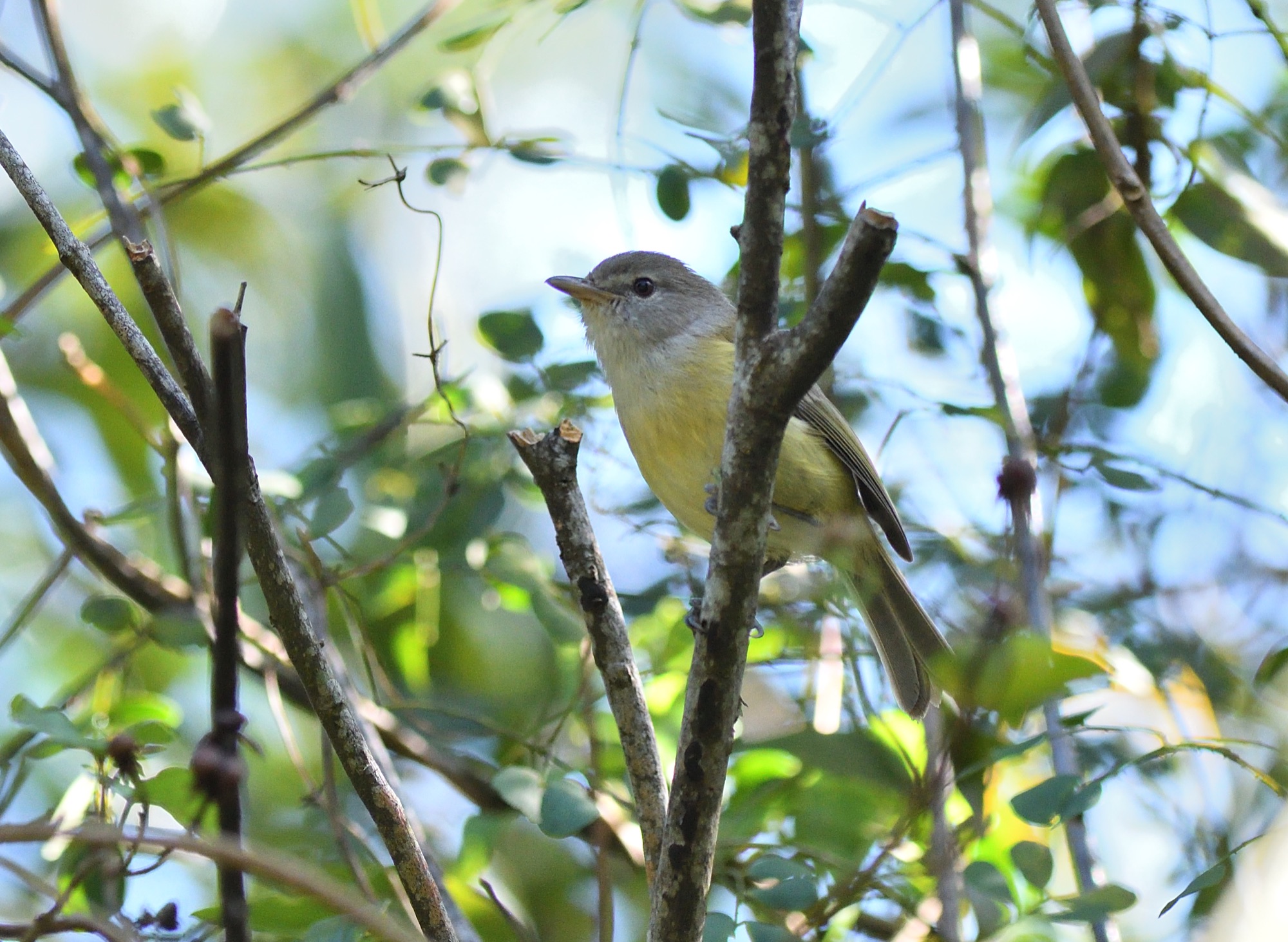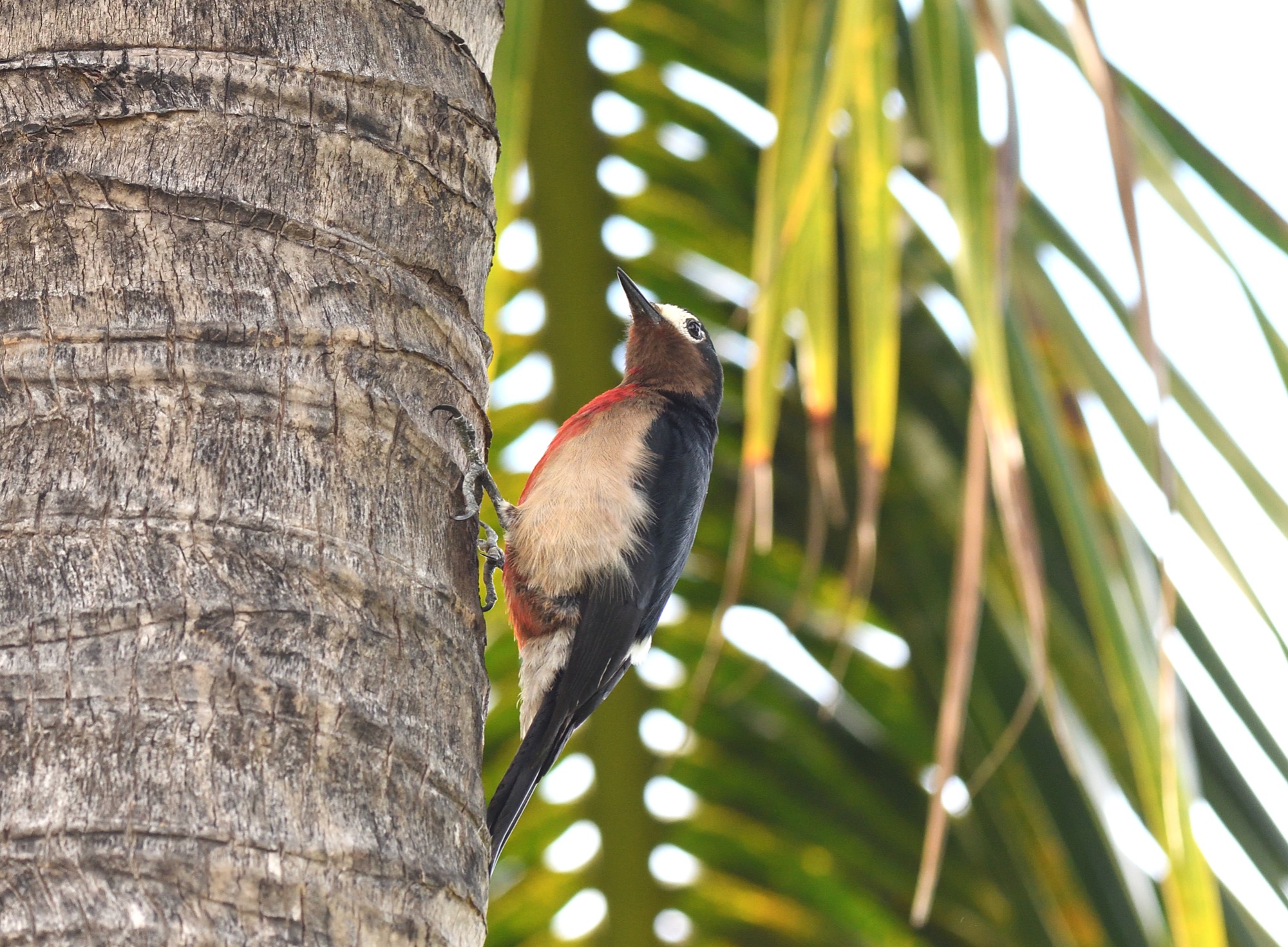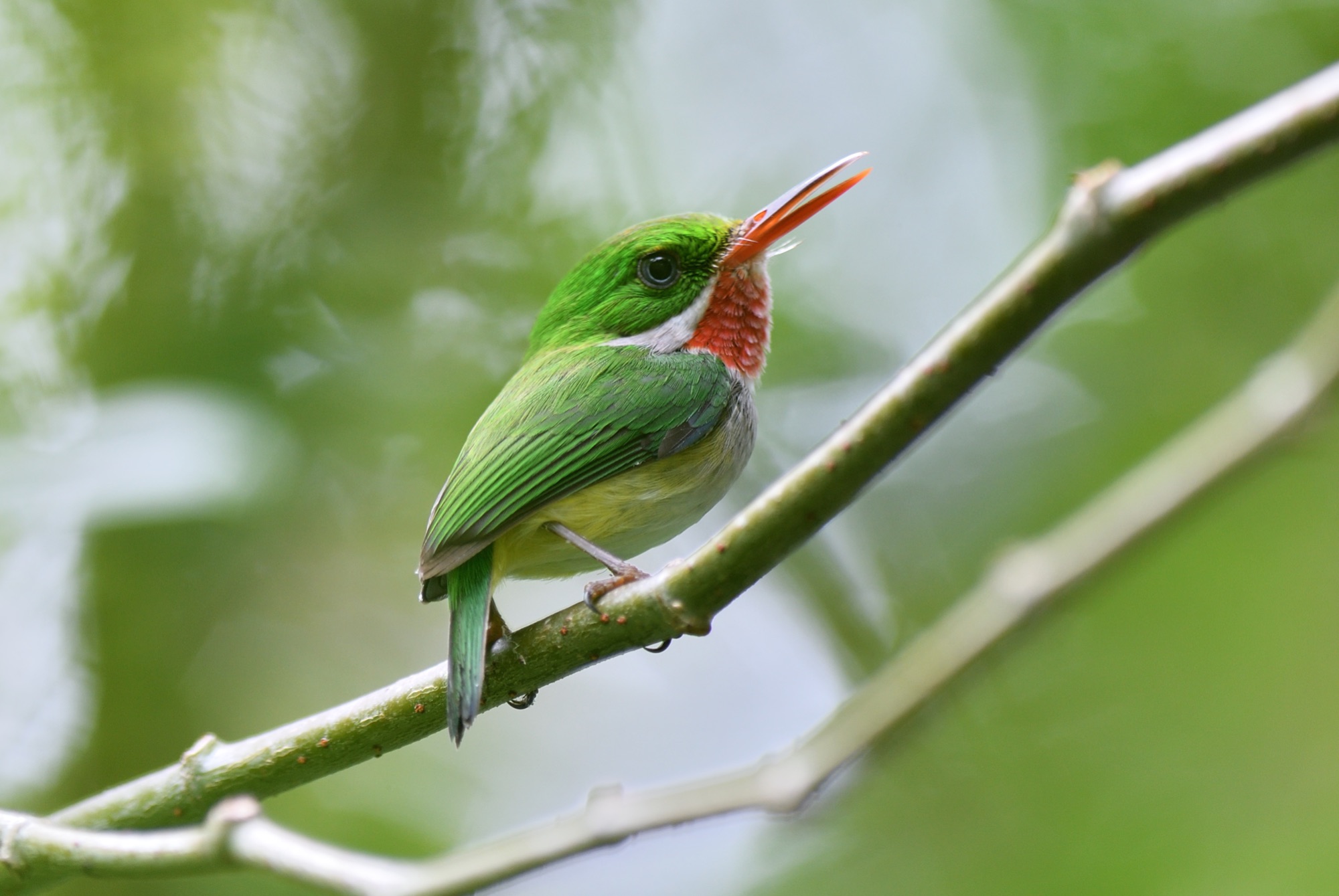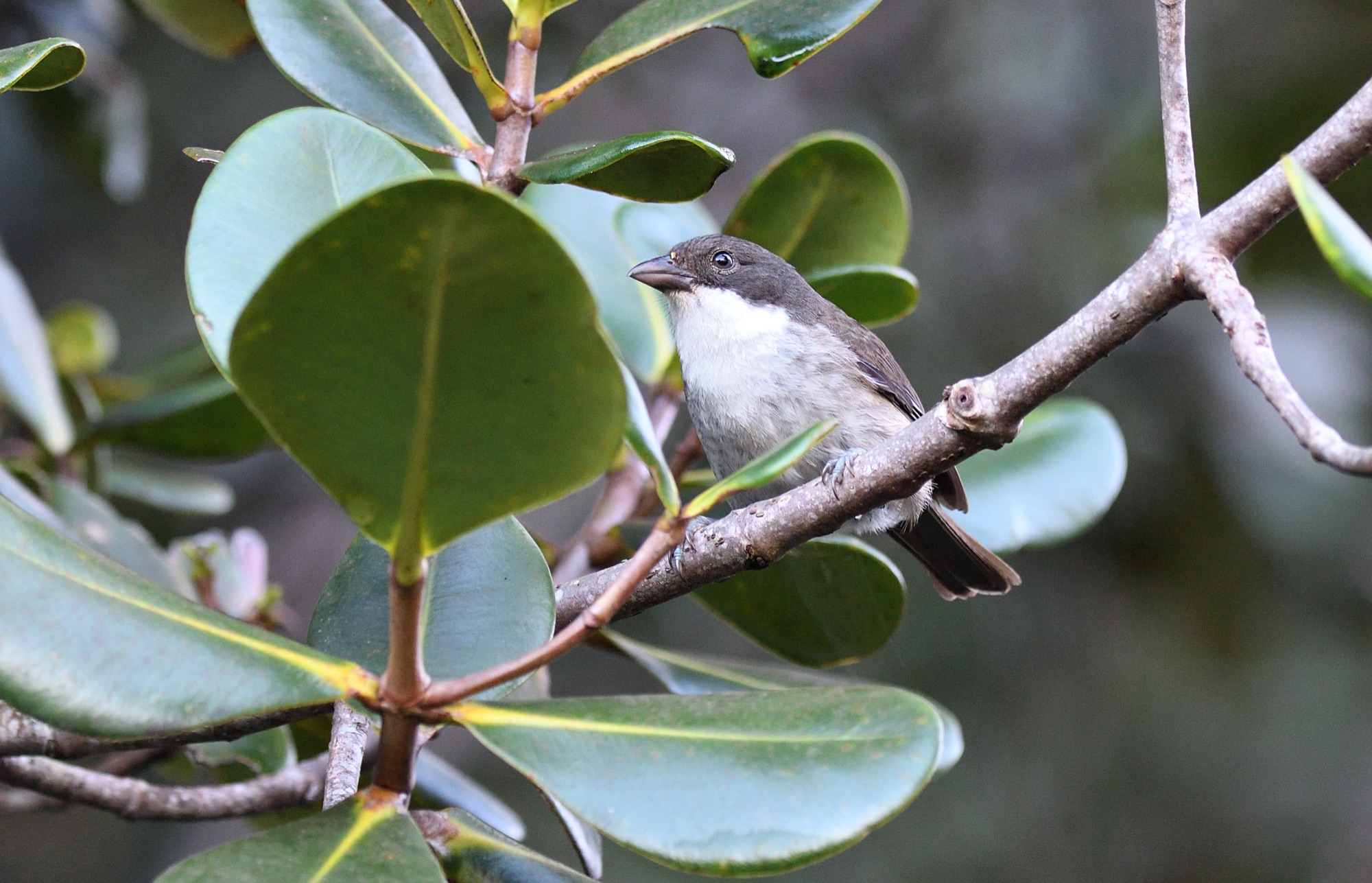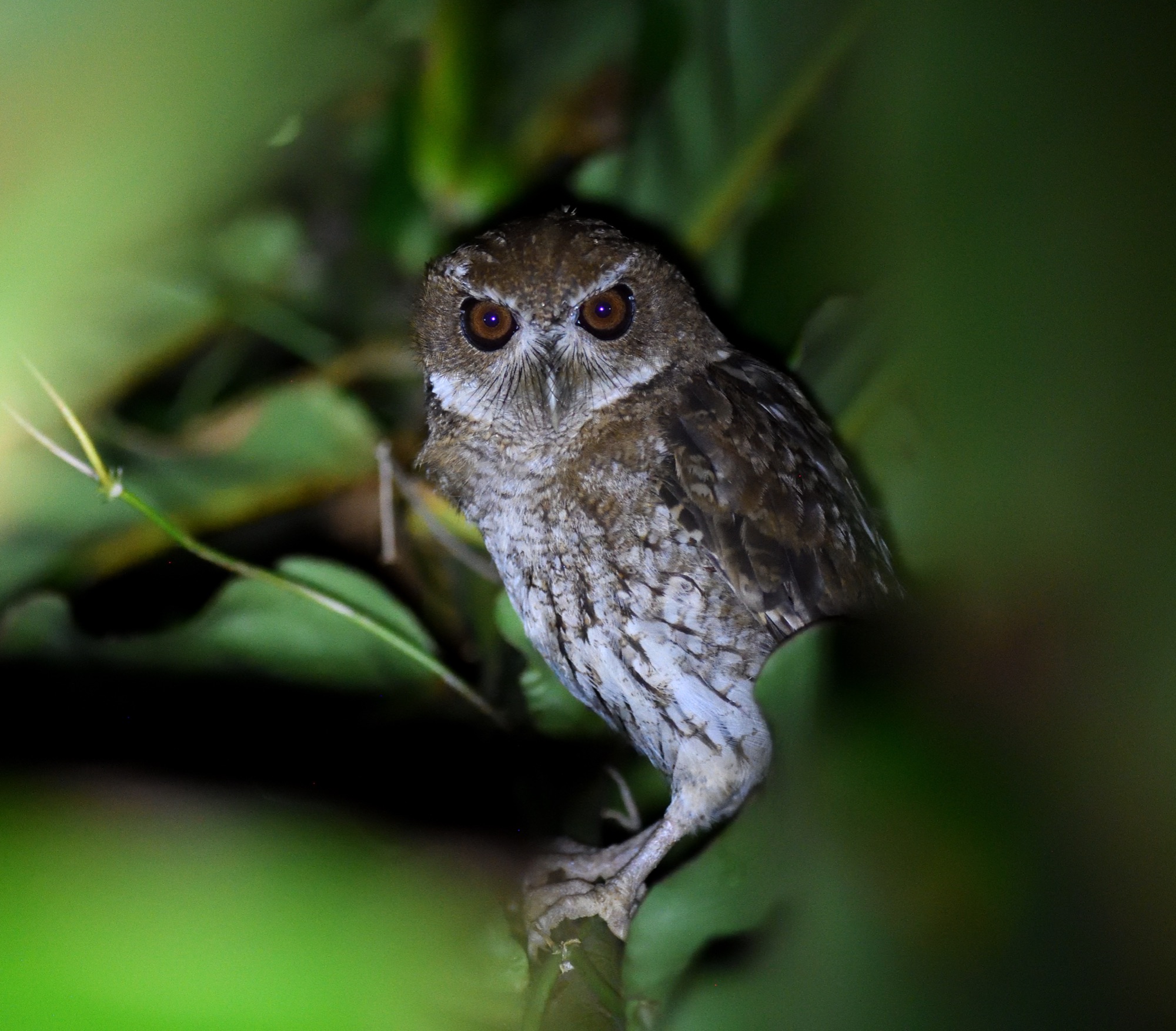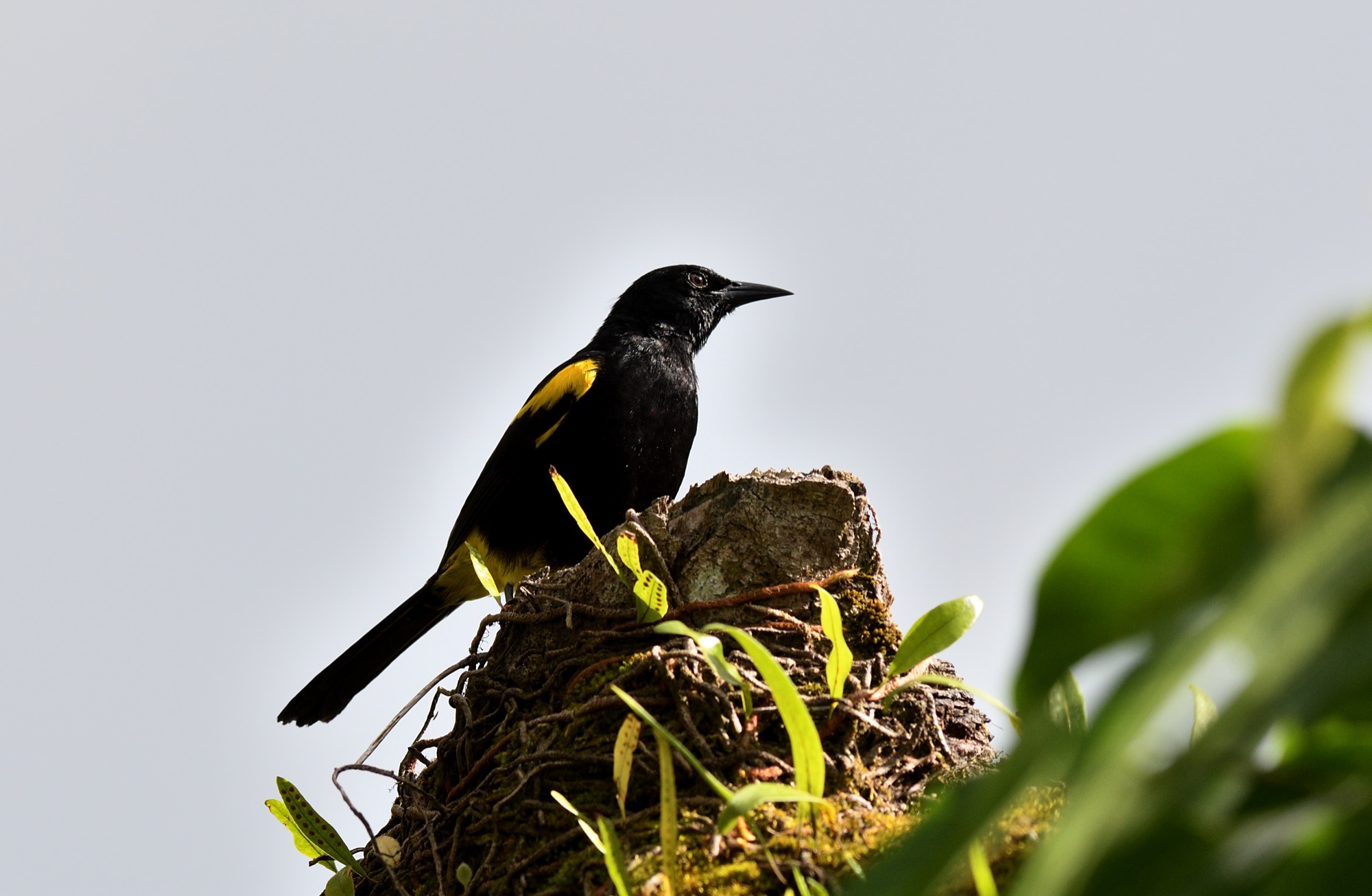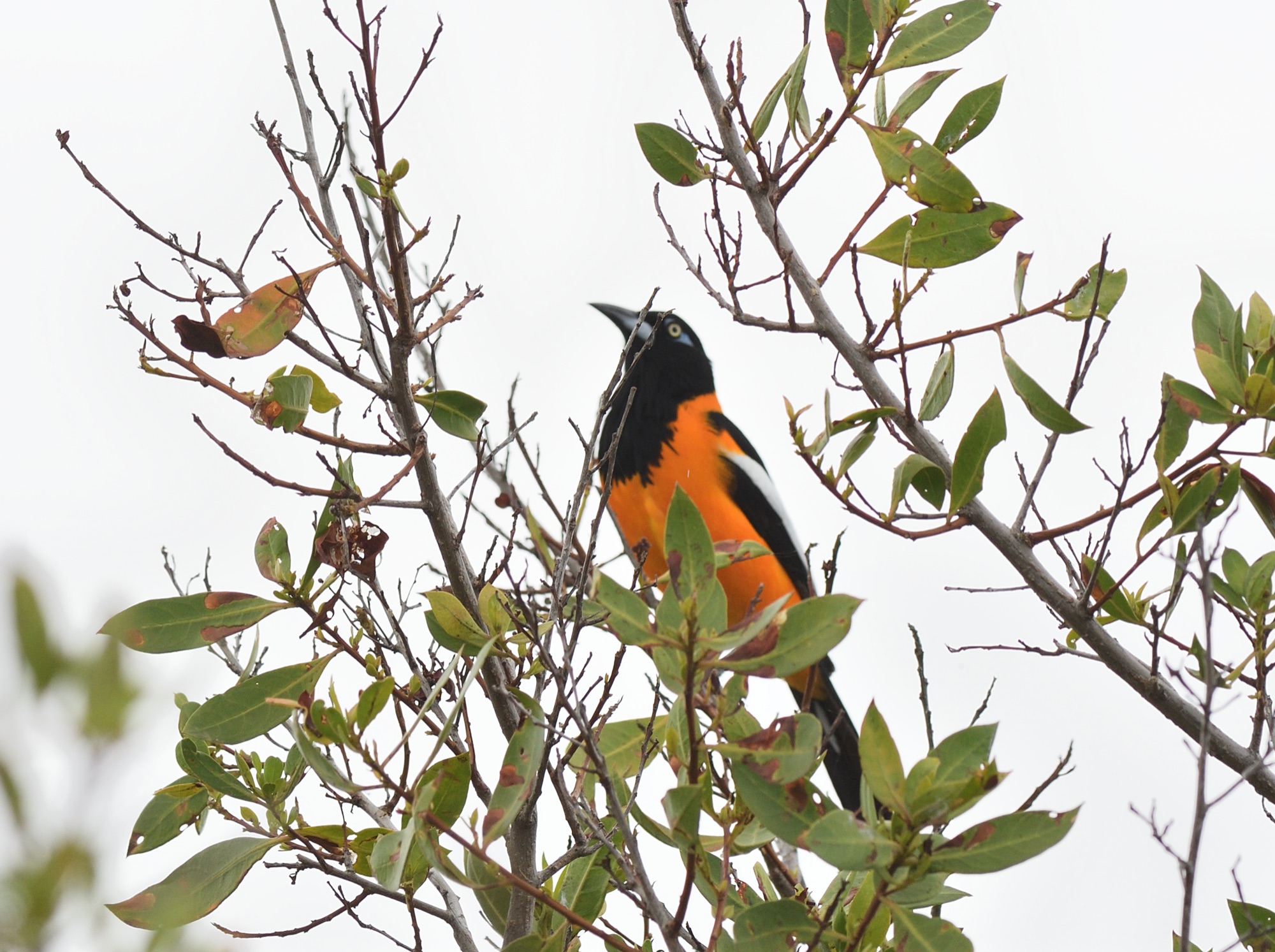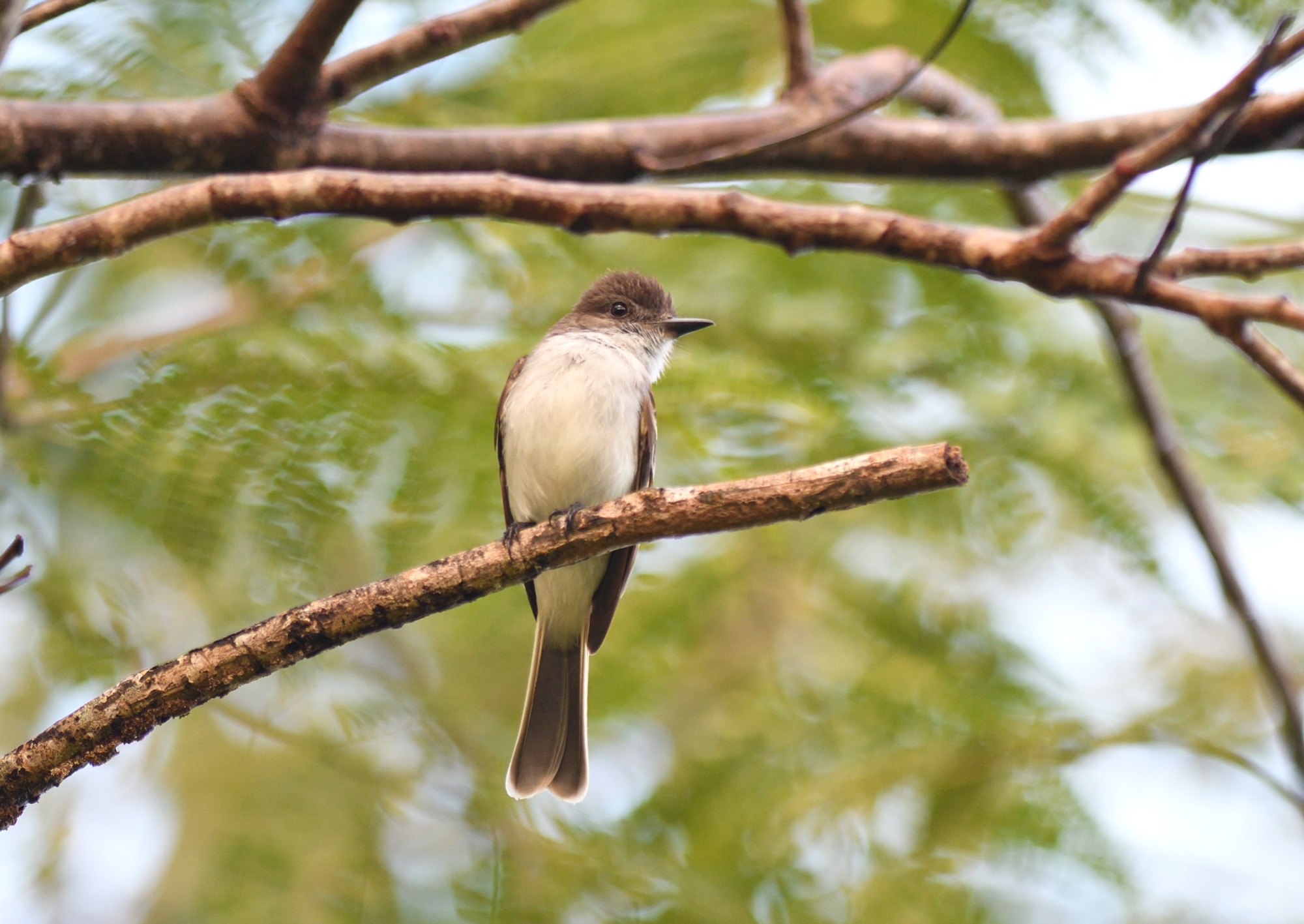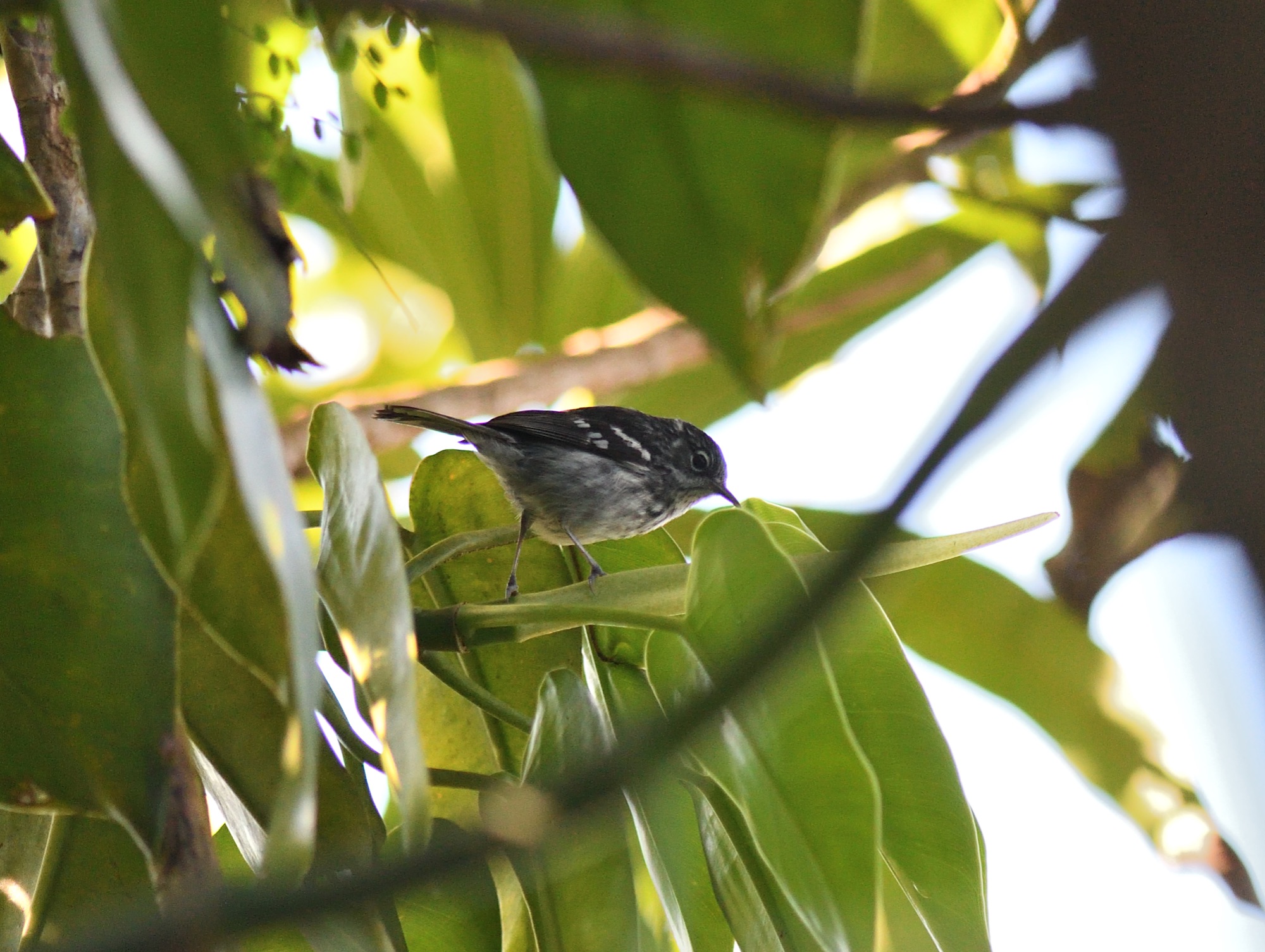Day 1 Arrival in San Juan, Puerto Rico - 6th March 2023
Plan on arriving today in San Juan (Airport Code SJU). Upon arrival you will be transferred to a nearby hotel where you will meet up with the rest of the group at dinner and can discuss the exciting adventure that awaits. Night in Arecibo.
Day 2 Cambalache State Forest - Guajataca Cliffs - Laguna Tortuguero
We are going to spend most of the day in the Northern Karst region of Puerto Rico in search of our first Puerto Rican endemics beginning after breakfast at Cambalache State Forest. This large lowland forest is home to a number of endemics including Puerto Rican Lizard Cuckoo, Puerto Rican Tody, Puerto Rican Woodpecker, Puerto Rican Vireo, Adelaide's Warbler, Puerto Rican Spindalis and Puerto Rican Bullfinch. Depending on taxonomy we also have our first chances of Puerto Rican Loggerhead Kingbird, Puerto Rican (Lesser Antillean) Pewee and Puerto Rican (Antillean) Euphonia. The shy Key West Quail-Dove also resides here and can sometimes be spotted foraging along the path early in the morning, whilst more common species possible this morning include Ruddy Quail-Dove, White-crowned Pigeon, Scaly-naped Pigeon, Mangrove Cuckoo, Pearly-eyed Thrasher, Eastern Red-legged Thrush and Black-whiskered Vireo. This area is also home to Monk Parakeet and Orange-cheeked Waxbill along with a few other introduced species.
Once finished here we can check out some high cliffs further west where White-tailed Tropicbird breeds before finishing the day at Laguna Tortuguero Refuge. The marshes and wetlands are interspersed with small patched of trees that can be productive for species such as Puerto Rican Oriole and Puerto Rican Spindalis. There should be a good variety of herons, egrets and shorebirds to be seen. Night at Arecibo.
Day 3 Rio Abajo - Maricao
After an early breakfast we will set out to Rio Abajo State Forest, which is the best place to see the extremely endangered Puerto Rican Parrot. Early mornings are the best time to see Key West and Ruddy Quail-Doves foraging on the roadside, whilst there's a whole suite of endemics present in this great forest including Puerto Rican Tody, Puerto Rican Woodpecker, Puerto Rican Pewee (near endemic), Puerto Rican Flycatcher, Puerto Rican Vireo and Puerto Rican Bullfinch amongst others. Leaving here it's around a 2 hour drive to the south coast alng a winding road that traverses the central mountains. Depending on the time we may well have a chance to explore Maricao or Guanica depending on our schedule. Night at Hacienda Juanita.
Day 4 Maricao State Forest - Guanica State Forest
After a good breakfast we will explore the lush montane forests of Maricao State Forest where our main endemic targets will be Green Mango, Puerto Rican Emerald, Elfin-Woods Warbler and Puerto Rican Tanager. The warbler is a fascinating species having been first observed as recently as 1968 and is the first species described in the Caribbean since 1927. The Puerto Rican Tanager is now an endemic family and is the sole member of the genus Nesospingidae and a must-see for family collectors. This mountainous area is also very good for a number of other endemics including Puerto Rican Tody, Puerto Rican Woodpecker, Puerto Rican Lizard-Cuckoo, Puerto Rican Bullfinch, Puerto Rican Oriole and Puerto Rican Spindalis. Meanwhile Puerto Rican Loggerhead Kingbird, Puerto Rican Vireo, Puerto Rican (Antillean) Euphonia are also likely to be seen.
After lunch and a break back at the hotel we will head into Guanica State Forest where we should see Adelaide's Warbler if still needed. However, our main prizes await once the sun has set as both Puerto Rican Screech-Owl and Puerto Rican Nightjar can be found here. Night at Guanica.
Day 5 Laguna Cartagena - Cabo Rojo Salt Flats - Parguera - Guanica State Forest
There are a number of sites, all within a short drive of our hotel and our exact itinerary depends on which species we still need to target. Maybe we will do a morning visit to the hills of Guanica State Forest for another chance of Adelaide's Warbler, and this is also a good place to see Caribbean Elaenia and Puerto Rican Flycatcher. We will also search the mangroves around Parguera for the endemic and unfortunately declining Yellow-shouldered Blackbird. And we should also see the local race of Clapper Rail here as well. Laguna Cartegena NWR sometimes has West Indian Whistling-Duck and Masked Duck, along with White-cheeked Pintail, Plain Pigeon, Mangrove Cuckoo, Black-faced and Yellow-faced Grassquits and some introduced species such as Bronze Manakin and Orange Bishop. Further scrutiny of the surrounding farm fields could produce Grasshopper Sparrow as well. There will also be another option of some nightbirding as Puerto Rican Nightjar can be found quite close to our excellent hotel. Night at Guanica.
Day 6 Humacao Reserve - Las Croabas
We still have some time to chase anything we still need for our lists in the south-west corner of this brilliant island before heading east along the coast road to Humacao Reserve. This is a good site for both Antillean Crested Hummingbird and Green-throated Carib, whilst Caribbean Coot, West Indian Whistling-Duck and a wide variety of commoner species can be found here. Further along the coast is another area to check for hummers and there's usually some flowering Jacaranda trees that can prove attractive to them. Night near San Juan.
Day 7 San Juan - Punta Cana, Dominican Republic
This morning we will fly from San Juan to Punta Cana in the Dominican Republic. Upon arrival we will drive up into Los Haitises National Park to a lovely hotel. We have the chance to rest up a little bit before exploring the grounds of this quirky hotel, which is home to a good selection of endemics and Caribbean specialities such as Hispaniolan Mango, Vervain Hummingbird, Broad-billed Tody, Antillean Palm Swift, Antillean Piculet, Hispaniolan Woodpecker, Stolid Flycatcher, Hispaniolan Pewee, White-necked Crow, Palmchat, Pearly-eyed Thrasher, Greater Antillean Bullfinch and others. This evening we will meet up with our local guide and search for the endemic Ashy-faced Owl. Overnight at Altos de Cano Hondo.
Day 8 Los Haitises
This morning we will be taken by our local guide to search for one of the world's rarest birds of prey, the extremely localised and rare endemic Ridgway's Hawk. This corner of the Dominican Republic is its stronghold thanks to great local conservation efforts and we have a very good chance of seeing this much-wanted species very well. We will see a number of previously mentioned species this morning as well such Plain Pigeon, Ruddy Quail-Dove, Broad-billed Tody, Antillean Piculet, Black-whiskered Vireo, White-necked Crow, Palmchat, Hispaniolan Oriole, Puerto Rican (Antillean) Euphonia and Black-crowned Tanager among others. This evening we can have another try for Ashy-faced Owl if needed. Night at Altos de Cano.
Day 9 Los Haitses - Salinas de Bani - Villa Barrancoli
Following an early departure we will set out on the long drive to to the eco-lodge located in northern Sierra de Bahoruco near Puerto Escondido. We will make one dedicated birding stop along the coast at Salinas de Bani, an area of tidal mudflats, mangroves and salt pans that is a good area for a wide variety of species including American Flamingo, Reddish Egret, Little Blue Heron, a variety of shorebirds including Wilson's & Snowy Plovers, Western & Semipalmated Sandpipers, Cabot's Tern and others. If there's an onshore breeze it could bring with it the possibility of seeing Black-capped Petrel, although we'd need our scopes and a good deal of luck. It will then take several more hours to reach our base for the next two nights at Villa Barrancoli. Night at Villa Barrancoli.
Day 10 Zapoten
We will leave around 4am this morning in our 4-wheel drive vehicles for the very bumpy and rough drive up into the higher reaches of the Sierra de Bahoruco, giving us a decent chance in the hour before daybreak to see the tricky Hispaniolan Nightjar. We need to be in place higher up the mountain at sunrise to give ourselves the best opportunity to see La Selle Thrush as it feeds in the leaf litter beside the track. The surrounding montane forest plays host to the finest birding on the island and we will be looking for a large number of endemics and Caribbean specialities. We should find the taxonomically-odd White-winged and Green-tailed Warblers easily enough as they feed mid-storey, but the secretive Western Chat-Tanager can be rather tricky. There's also Narrow-billed Tody, Hispaniolan Emerald, Hispaniolan Trogon, Hispaniolan Elaenia, Hispaniolan pewee, Black-crowned Tanager, Hispaniolan Spindalis, Hispaniolan Crossbill, Antillean Siskin, Hispaniolan (Antillean) Euphonia, and all the time our birding will be set to a backdrop of the distinctive notes of the lovely Rufous-throated Solitaire. Hopefully, we can connect with one of the overwintering Bicknell's Thrush that inhabit the montane forests here. In the afternoon we will bird the lower drier slopes and agricultural fields where the primary target will be the scarce endemic Bay-breasted Cuckoo, whilst other species include Antillean Piculet, Hispaniolan Woodpecker, Hispaniolan Loggerhead Kingbird, Flat-billed Vireo, Hispaniolan Oriole and Greater Antillean Bullfinch. This evening we can make another attempt at Hispaniolan Nightjar if needed, and there is also a chance of Least Poorwill as well. Night at Villa Barrancoli.
Day 11 Rabo de Gato - Laguna del Rincon - Pedernales
Following yesterday's early start we can have a more leisurely morning birding the immediate vicinity of the eco-lodge, searching the Rabo de Gato trail for the Bay-breasted Cuckoo and this gives us another chance to find any species still needed for our lists. Maybe the rare White-fronted Quail-Dove can be seen, or a Key West Quail-Dove, whilst Hispaniolan Amazon, Antillean Piculet, Hispaniolan Woodpecker, Vervain Hummingbird, Hispaniolan Trogon, Hispaniolan Lizard-Cuckoo, both Narrow-billed and Broad-billed Tody, Stolid Flycatcher should be more prominent. We should also see the introduced Olive-throated Parakeet, whilst White-necked Crow and Palmchat are reasonably common around the edges of the agricultural areas. We will probably have lunch here before heading to the coast and checking out the freshwater marshes that border Laguna Rincón. A wide variety of species occurs here and amongst numerous possibilities we could see Sora, Purple Gallinule, Least Bittern and what chance of a Spotted Rail or Yellow-breasted Crake? More expected species include Pied-billed Grebe, White-cheeked Pintail, Lesser Scaup, Ruddy Duck, American Wigeon and Blue-winged Teal. We will then drive to our next hotel close to the the Haitian border and enjoy fantastic views over the Caribbean Sea. Night at Pedernales.
Day 12 Alcoa Road - Cabo Rojo
Early this morning we will drive the short distance to the start of Alcoa Road primarily to find Hispaniolan Palm Crow and Hispaniolan Crossbill, and this is also the best site for Golden Swallow. We will take our time and cover the range of habitats from Pine Forests higher up down to drier forest and shrub-covered slopes at the bottom giving us the best chance to find other species such as Plain Pigeon, Hispaniolan Parakeet, Hispaniolan Amazon, Burrowing Owl, Hispaniolan Trogon, Broad-billed Tody and Hispaniolan Pewee.
We will spend the afternoon along the coast at Cabo Rojo searching the pools and lagoons for various ducks, American Flamingo, Brown Pelican, American White Ibis, Roseate Spoonbill, various herons and egrets, American Coot, Sora, Clapper Rail, more shorebirds such as Stilt Sandpiper and Short-billed Dowitcher, Belted Kingfisher and Golden (Yellow) Warbler. From a nearby headland we can scan for White-tailed Tropicbird, Magnificent Frigatebird, Brown Booby and American Royal Tern, and there's anothe chance of Black-capped Petrel. There should also be Cave Swallows present along the cliffs, whilst Caribbean Martin is also possible. Leaving here we will head to our next hotel at Barahona. Night at Barahona.
Day 13 Cachote
Another early start is necessary to head up into the montane forests of the eastern Sierra de Bahoruco to Cachote. The rare endemic Eastern Chat-Tanager inhabits the cloud forest but it's going to take a concerted effort to get a decent view of this shy species. We also have further chances of the upland species including Hispaniolan Emerald, Hispaniolan Trogon, Narrow-billed Tody, Rufous-throated Solitaire, Bicknell's Thrush, White-winged and Green-tailed Warblers, Hispaniolan Spindalis and others. We should be finished by late morning, and we still have some time to chase any species still missing before heading to Santo Domingo in the late afternoon. Night in Santo Domingo.
Day 14 End of tour - 19th March 2023
Transfer to Santo Domingo Airport (Airport Code SDQ) and the end of the tour.
All photos copyright Nick Bray/Zoothera Birding
Just hover your cursor over each image for info

